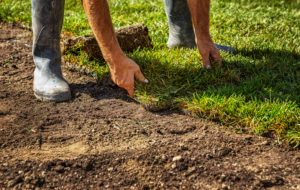Fast Release vs. Slow Release Fertilizers

Fertilizer for lawns can vary in the amount of nitrogen, phosphorus, and potassium in it because some grass species are hungrier than others. Beyond this consideration, a homeowner also has to choose between fast-release and slow-release fertilizers. Determining which is best depends mainly on the following factors.
Growth Rate
With the nitrogen immediately available, fast-release fertilizers have the advantage of rapidly stimulating growth in grass plants. This is a nice option if deep green color is desired in a hurry. It’s also valuable if the lawn has suffered damage like heavy foot traffic and the plants need extra energy to form thicker roots and more blades along with spawning new offshoots.
Cost
With the additional processes required to manufacture slow-release fertilizers in the first place, they’re going to cost more than fast-release fertilizers. As the number of square feet of lawn increases, the price difference becomes that much greater.
Labor
As the name might suggest, slow-release fertilizers don’t need to be reapplied nearly as often as fast-release fertilizers do. Fast-release fertilizers normally last between two and four weeks before needing a second dose. Depending on the slow-release fertilizer used and environmental conditions like rainfall, heat, and microbe activity, one application can last from two months to a full year.
Burn Risks
One of the risks associated with fast-release fertilizers is burning. The problem is that these fertilizers are made of urea, ammonium sulfate, and similar chemicals that are basically salts. There are no additives that inhibit their exposure to grass plants. If too much is in one spot, these salts will pull the moisture right out of the grass plants. The results are brown, dehydrated plants. Grass that’s wet before the fertilizer is applied allows even more fertilizer to cling to it and increase the risk further. Tossing in high temperatures makes it that much worse. With slow-release fertilizer, the risk is greatly reduced.
Temperature Range
Whether the slow-release fertilizer is chemical or organic in form, it’ll only decompose when temperatures are warm enough. In chemical fertilizers, heat speeds the reactions that release nutrients. With organic fertilizer, soil microbes become active in warm weather and break down it’s ingredients. In Texas, warm climate grasses like Bermudagrass dominate, so slow-release fertilizers work nicely. However, in some areas, cool-tolerant grasses like ryegrass are included to keep lawns green during the winter. Here, quick-release fertilizer is a definite benefit since these species of grass need feeding during the chilly months when slow-release fertilizers are mostly inactive. Also, some of these cool-loving varieties are heavy consumers of nitrogen. Only fast-release fertilizers can keep up.
The Best of Both Worlds
There’s no law that prevents slow and fast release fertilizers from working together. In fact, it’s recommended that lawns be given a combination of the two for best results. The percentage of each depends on factors like the types of grass species in the lawn, local climate conditions, and existing nutrient levels in the soil among other things.
If you’re interested in a certain type of grass or are looking to renovate your home’s lawn, contact The Grass Outlet today!





